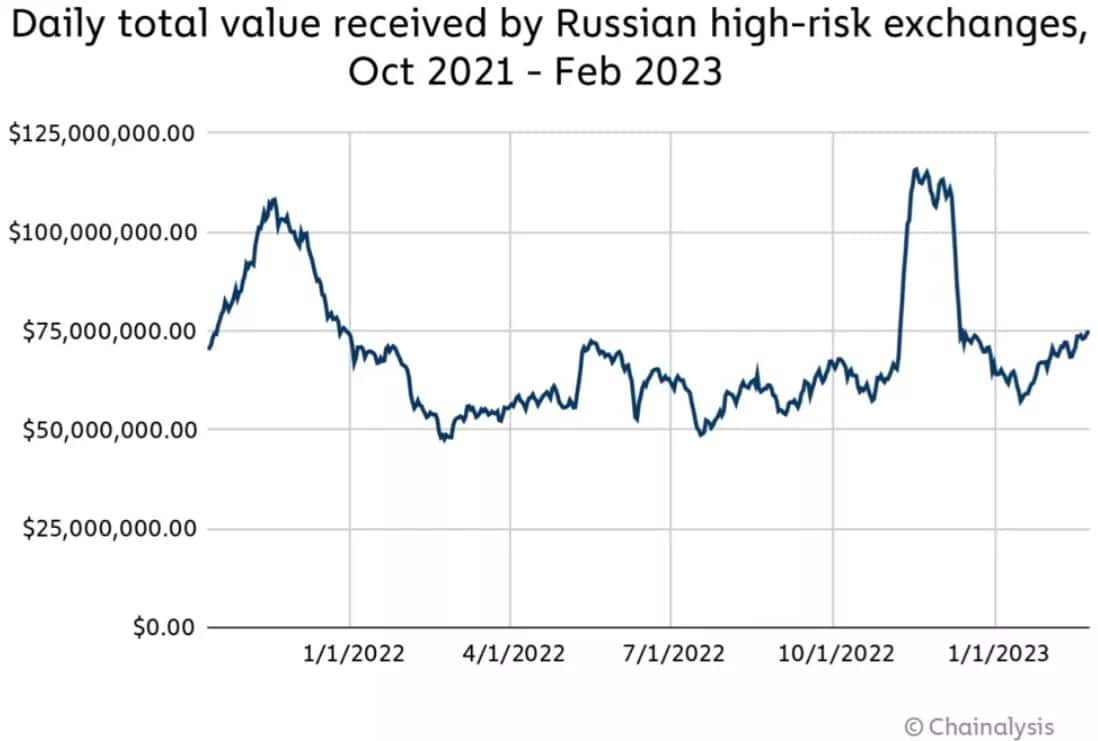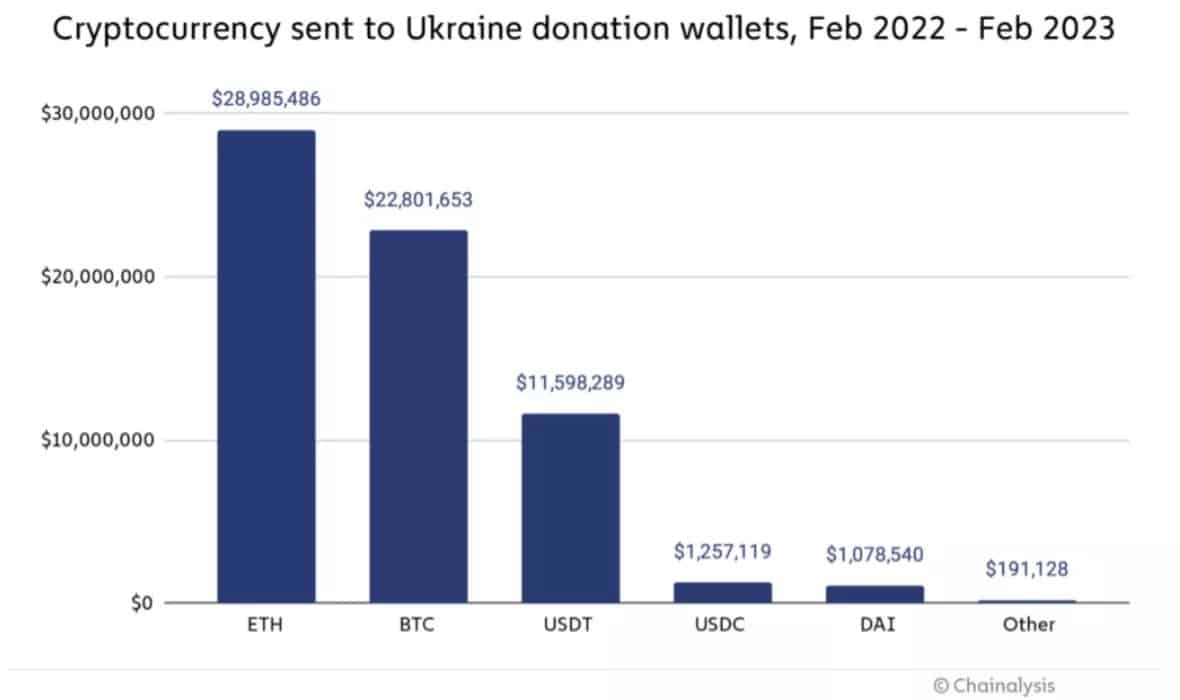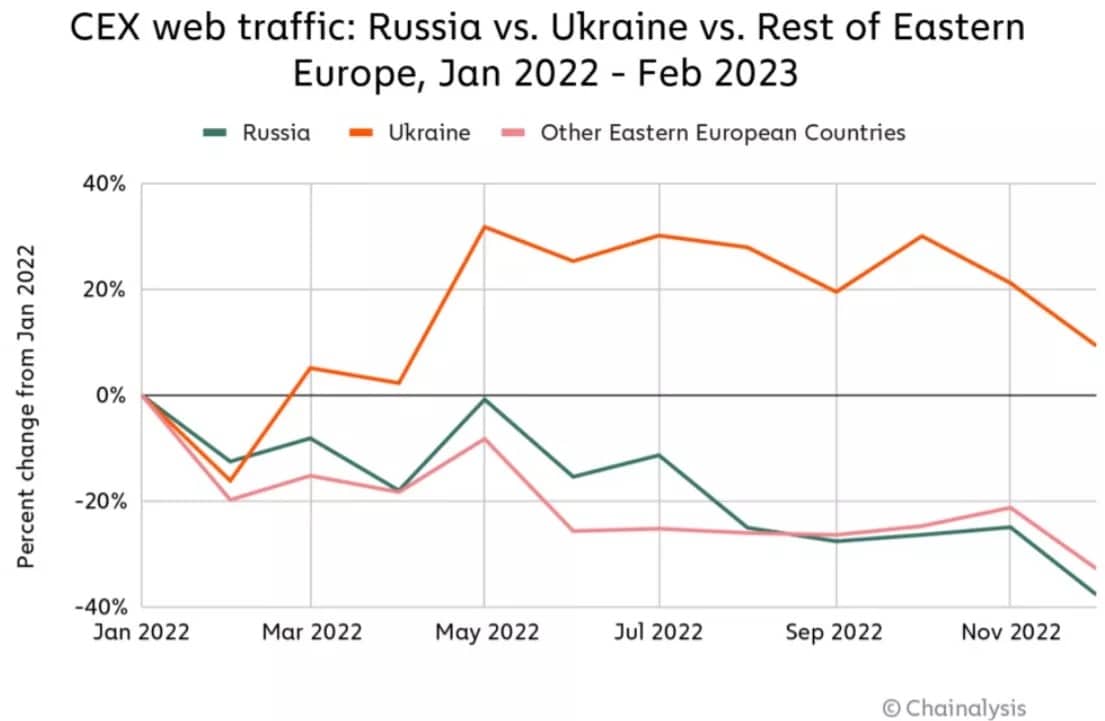One year after the start of the war in Ukraine, Chainalysis looks back at the role of cryptocurrencies in the conflict. Let’s take stock of these unprecedented application cases in such a situation
The role of cryptocurrencies in the war between Russia and Ukraine
It’s been a year now since Russia began its invasion of Ukraine, and as we’ve seen throughout 2022, cryptocurrencies have invited themselves into both sides for various instances of application.
At the start of the fighting, some of the regulators were concerned about the role cryptos could play as a tool for Russian oligarchs to evade international sanctions. While a fraction of their fortune could hypothetically be hidden in this way, the billions at stake were far too large to be absorbed by the capitalisation of our ecosystem. This scenario was therefore quickly dismissed.
Moreover, many exchanges closed their services to Russian users, which raised questions about the legitimacy of these measures.
In any case, Chainalysis investigated the daily volume received by Russian platforms, and did not note any particular aberrations. Indeed, the peaks of activity are due to the various events that have marked our ecosystem, such as the FTX crash:

Figure 1 – Volumes received by Russian exchanges
In terms of funding for paramilitary organisations, Chainalysis has identified $5.4m in donations to 100 groups supporting Moscow. While some of these donations had already begun to flow before the war began, the majority of the funding took place in the first half of 2022, before tapering off thereafter:

Figure 2 – Cryptocurrency donations to Russian military groups
The Ukrainian balance sheet
While cryptocurrencies may have played a role on the Russian side, their impact is all the more pronounced in Ukraine. The official addresses of Volodymyr Zelensky’s government received $56 million in March 2022, and donations have continued to flow in, bringing the total today to nearly $70 million, mostly in BTC and ETH:

Figure 3 – Cryptocurrency donations to Ukraine
Last summer, the Ukrainian government detailed the purchases made with these donations, including weapons and computer and medical equipment.
In addition, the conflict has pushed Ukrainians to adopt cryptocurrencies much faster than the rest of the world. This places the country third in Chainalysis’ 2022 Global Crypto Adoption Index, behind Vietnam and the Philippines.
Interestingly, while centralized platforms saw Russian and European users decline last year, the opposite trend was observed for Ukrainians:

Figure 4 – Origins of users on centralised platforms
While it must be remembered that the role of cryptocurrencies in this war remains marginal when put into perspective in the face of the magnitude of the situation, it is nevertheless important to emphasise that use on such a scale in an armed conflict is unprecedented.
